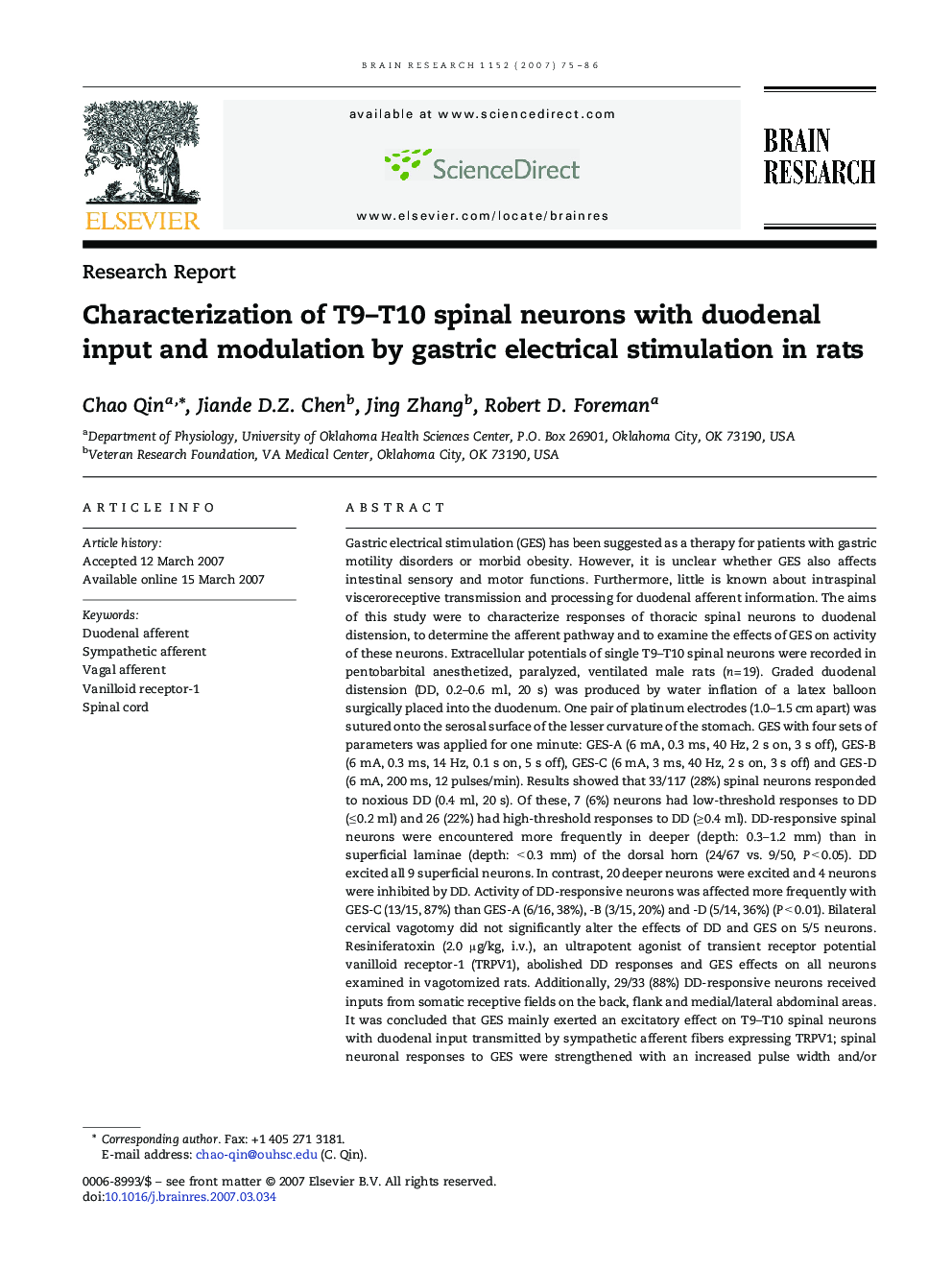| Article ID | Journal | Published Year | Pages | File Type |
|---|---|---|---|---|
| 4330990 | Brain Research | 2007 | 12 Pages |
Gastric electrical stimulation (GES) has been suggested as a therapy for patients with gastric motility disorders or morbid obesity. However, it is unclear whether GES also affects intestinal sensory and motor functions. Furthermore, little is known about intraspinal visceroreceptive transmission and processing for duodenal afferent information. The aims of this study were to characterize responses of thoracic spinal neurons to duodenal distension, to determine the afferent pathway and to examine the effects of GES on activity of these neurons. Extracellular potentials of single T9–T10 spinal neurons were recorded in pentobarbital anesthetized, paralyzed, ventilated male rats (n = 19). Graded duodenal distension (DD, 0.2–0.6 ml, 20 s) was produced by water inflation of a latex balloon surgically placed into the duodenum. One pair of platinum electrodes (1.0–1.5 cm apart) was sutured onto the serosal surface of the lesser curvature of the stomach. GES with four sets of parameters was applied for one minute: GES-A (6 mA, 0.3 ms, 40 Hz, 2 s on, 3 s off), GES-B (6 mA, 0.3 ms, 14 Hz, 0.1 s on, 5 s off), GES-C (6 mA, 3 ms, 40 Hz, 2 s on, 3 s off) and GES-D (6 mA, 200 ms, 12 pulses/min). Results showed that 33/117 (28%) spinal neurons responded to noxious DD (0.4 ml, 20 s). Of these, 7 (6%) neurons had low-threshold responses to DD (≤ 0.2 ml) and 26 (22%) had high-threshold responses to DD (≥ 0.4 ml). DD-responsive spinal neurons were encountered more frequently in deeper (depth: 0.3–1.2 mm) than in superficial laminae (depth: < 0.3 mm) of the dorsal horn (24/67 vs. 9/50, P < 0.05). DD excited all 9 superficial neurons. In contrast, 20 deeper neurons were excited and 4 neurons were inhibited by DD. Activity of DD-responsive neurons was affected more frequently with GES-C (13/15, 87%) than GES-A (6/16, 38%), -B (3/15, 20%) and -D (5/14, 36%) (P < 0.01). Bilateral cervical vagotomy did not significantly alter the effects of DD and GES on 5/5 neurons. Resiniferatoxin (2.0 μg/kg, i.v.), an ultrapotent agonist of transient receptor potential vanilloid receptor-1 (TRPV1), abolished DD responses and GES effects on all neurons examined in vagotomized rats. Additionally, 29/33 (88%) DD-responsive neurons received inputs from somatic receptive fields on the back, flank and medial/lateral abdominal areas. It was concluded that GES mainly exerted an excitatory effect on T9–T10 spinal neurons with duodenal input transmitted by sympathetic afferent fibers expressing TRPV1; spinal neuronal responses to GES were strengthened with an increased pulse width and/or frequency of stimulation; T9–T10 spinal neurons processed input from the duodenum and might mediate effects of GES on duodenal sensation and motility.
